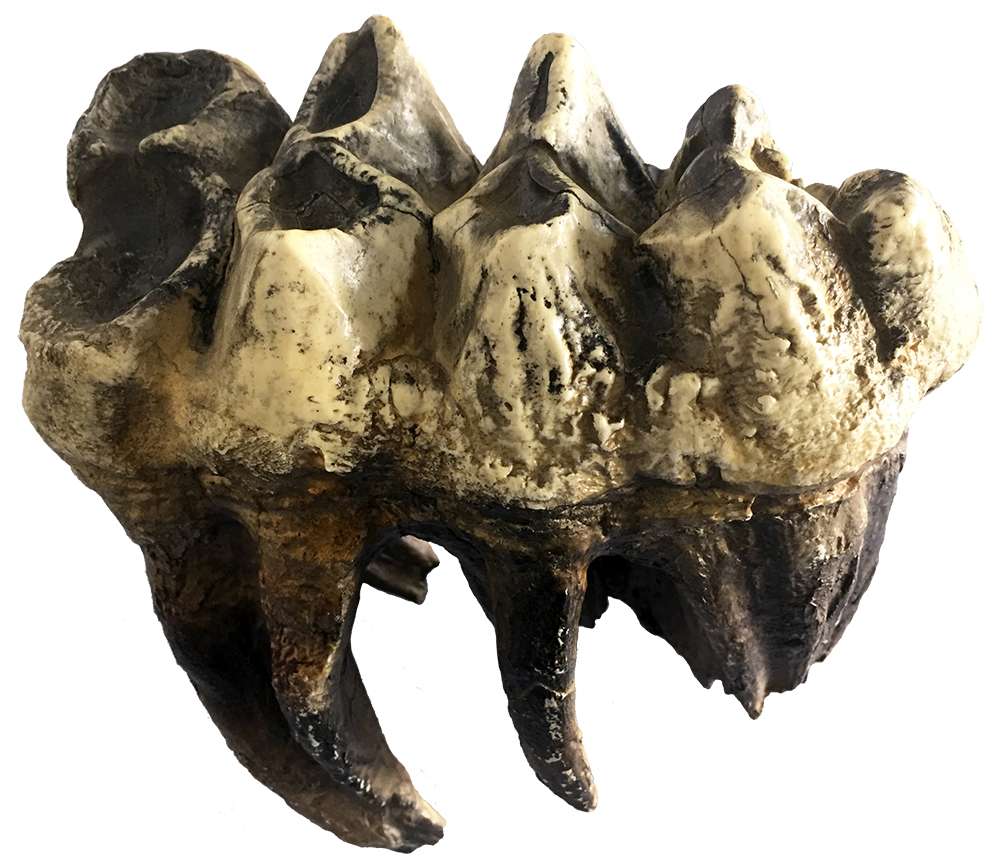
Mastodon, disturbingly enough, means ‘nipple tooth’, a reference to the pronounced cusps on its large molars. Mastodons included any proboscidean in the extinct genus Mammut which, unlike their mammoth relatives, were primarily North American and Central American forms. While texts often mention mammoths and mastodons in sync as if they were twin genera, mastodons arose over 25 million years ago, while mammoths and modern elephants diverged nearly 20 million years later. Despite their earlier origin, mastodons continued to flourish until the end of the last ice advance, roughly 11,000 years ago. Their extinction appears to be tied to human hunters entering their ranges.
While mastodons and mammoths both browsed and grazed, mastodons appear to have been primarily browsers in woodland areas and wetlands, while mammoths (like elephants) relied more heavily on grazing. Mastodon molars had large, rounded cusps to break down leaves and crush twigs, while mammoth molars had ridged flat tops better suited to cutting resistant, silica-rich grasses. Mastodons’ reliance on forest browsing may have been why they were largely restricted to North and Central America, as extending their range would have necessitated crossing extensive grasslands.
Like mammoths, mastodons were polyphyodonts, replacing their teeth throughout their lives. Mastodons used their molars in sequence with worn molars replaced by new ones. As the animal aged, new molars erupted at the back of the jaw and moved towards the front, gradually being worn away. This pattern of sequential molar replacement helped to extend the animals’ lifespans.
Together, mastodons and their distant mammoth cousins led to the recognition that extinction occurred. Although the concept of extinction was proposed earlier on the basis of marine fossils, considering how little was known of the oceans at the time, it seemed possible ammonites and mosasaurs still existed. But in 1800, George Cuvier demonstrated that mastodons and mammoths were distinct species from elephants and even at that time the continents were well enough explored that it was fairly obvious mastodons and mammoths no longer existed. The only non-Antarctic land area still largely unknown by Europeans was North America’s northwest coast. Hence, when Thomas Jefferson, an extinction skeptic, authorized the 1804 Lewis and Clark Expedition he instructed its leaders to look for mastodons. Sadly, none were found.